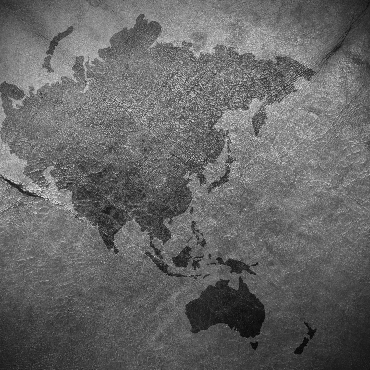UNCERTAINTY CLOUDS U.S. AIRPOWER IN ASIA
In late October, the Financial Times reported a pending decision of the United States Air Force to retire 48 permanently-deployed F-15 fighter jets from Okinawa over the next two years. Tokyo's reaction was quiet, but lawmakers in Washington quickly raised concerns about the message the withdrawal sends to Japan and the People's Republic of China (PRC). The concern lies not with the replacement aircraft; the Air Force plans to replace a portion of the F-15C Eagles with F-22 Raptors, which are among the world's most advanced air superiority fighters. Even so, the F-22 deployment will be rotational, rather than permanent. Once the temporary six-month assignment ends, the Air Force has no concrete plan to cover the remaining eighteen months. The Department of Defense (DOD) has promised a "heel-to-toe" replacement (i.e., no coverage gap), but the rotational nature of the assignment complicates this guarantee.
Overshadowing this challenge is the PRC's ability to target U.S. bases throughout East Asia, including Kadena Air Base in Okinawa. Shifting toward a rotational presence of fighter jets affords more flexibility to the U.S., but could complicate Washington's treaty obligations to Tokyo. With these concerns in mind, Kadena's 18th Wing conducted a readiness exercise in late November to demonstrate its sustained ability to "generate air power quickly." The exercise included both F-15s and F-22s, as well as aircraft for search and rescue, aerial refueling, reconnaissance, and command and control. (Financial Times, October 28, 2022; Defense News, November 1, 2022; Stars and Stripes, November 14, 2022; Stars and Stripes, November 22, 2022)
AUSTRALIA AGREES TO U.S. STRATEGIC BOMBER PRESENCE
In late October, an Australian media outlet reported that the United States intends to deploy six B-52 Stratofortress bombers at Tindal air base, a U.S. military facility in northern Australia. The deployment appears to be related to a $100 million expansion project for Tindal, which is set to be completed in 2026. Although the deployment is several years away, the political signal of Canberra's willingness to house American strategic bombers is immediate, and comes in the wake of increased military tensions along the Taiwan Strait. Beyond the B-52s, the base expansion also reportedly includes jet fuel storage and an ammunition bunker. Use of Tindal will continue to be seasonal, as monsoons restrict operational use from October to April in most years – a reality the U.S. Marine Corps has already encountered with its troop deployments in Darwin. (Reuters, October 31, 2022)
CHINA TRAINS PAKISTANI COUNTERTERRORISM AGENTS AS ATTACKS MOUNT
The China-Pakistan Economic Corridor (CPEC) is the crown jewel of the Belt & Road Initiative (BRI), Xi Jinping's pet foreign policy project aimed at shifting global economic orientation eastward. For Pakistan, CPEC promises tens of billions of dollars of investment in roads, railways, pipelines, and ports. It also serves as Islamabad's foundation for modernizing and integrating the national economy into the broader BRI structure. For these reasons, CPEC has become the target of repeated terrorist attacks from Pakistani-based insurgent groups who oppose China's development plans – attacks to which Pakistani authorities have had difficulty responding. In particular, an April suicide bombing in Karachi targeted Chinese teachers, but law enforcement officials encountered difficulty in identifying and apprehending the individuals behind this attack – so much trouble, in fact, that Chinese officials traveled to Islamabad earlier this year and spent two months training their Pakistani hosts in CCTV footage enhancement and cell phone data retrieval. The training marks a new instance of Chinese officials exporting their censorship and surveillance know-how to BRI partners: using surveillance technology as counter-insurgency tools. (Reuters, October 30, 2022)
RETHINKING CHINA'S PACIFIC ISLANDS INFLUENCE
Throughout 2022, Washington has grown increasingly concerned about Beijing's efforts to increase its economic influence and diplomatic presence throughout the Pacific Ocean. The Pacific Island region in particular plays a critical role in the U.S. military's ability to forward deploy into East Asia, and America has long-standing relations with Pacific Island countries (PICs) – a reality the PRC has sought to change. Recent data from the Australia-based Lowy Institute, however, qualifies China's success. According to the Institute's reporting, China's foreign assistance to the PICs is at an all-time low since 2008. True, the PRC has focused much of its attention on the Solomon Islands and Kiribati, and Beijing's advances in both nations have received overwhelming media attention. Even so, multilateral institutions and Western nations – Australia in particular – dominate economic assistance throughout the Pacific Islands. Given the increased reliance of the PICs on foreign assistance during the COVID-19 pandemic, an overall decrease of PRC aid calls into question the extent of Beijing's regional influence. (Guardian, October 30, 2022)
TOKYO PLANS SDF RESTRUCTURING
As political and military competition in East Asia intensifies, Tokyo is increasing its investment in its self-defense capabilities. In addition to enlarging its defense budget to six trillion yen ($41 billion), the Japanese government is overseeing the establishment of a joint commanding officer position to act as the operational head of the country's Ground, Maritime, and Air Self-Defense Forces (SDF). Under this new structure, the joint commanding officer would work with the Commander of U.S. Indo-Pacific Command while simultaneously improving the SDF's rapid reaction time. Recent developments involving Taiwan are motivating Japan to adjust its chain of command, but other episodes – like tsunamis, earthquakes, and especially the Fukushima nuclear meltdown – have also suggested the need for reform. The change is expected to take effect in 2027, when leading U.S. military officials are speculating the People's Liberation Army will achieve the requisite capabilities to conduct a military campaign against Taiwan. (Nikkei Asia, October 29, 2022)
Want these sent to your inbox?
Subscribe
